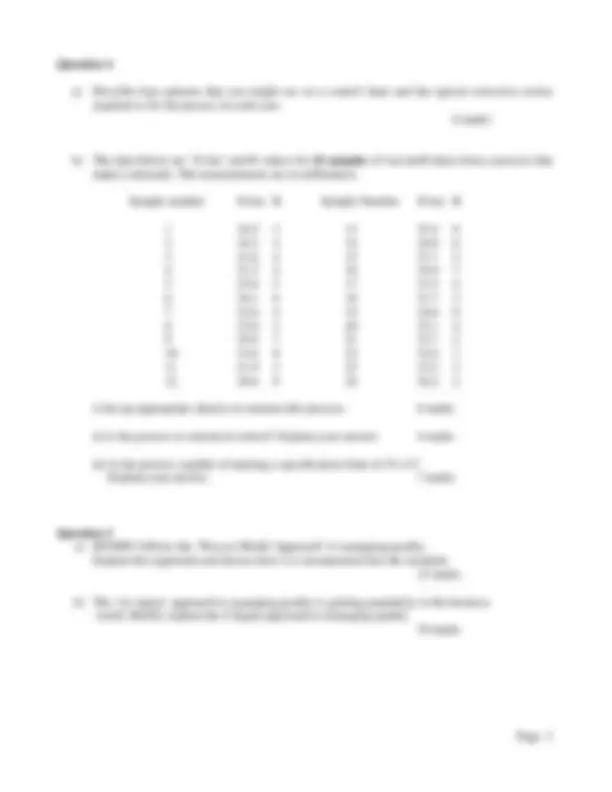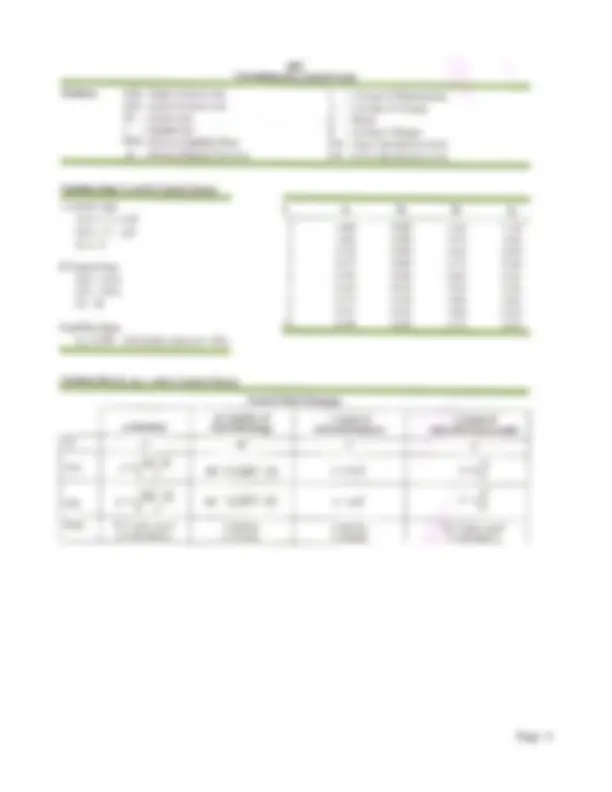




Study with the several resources on Docsity

Earn points by helping other students or get them with a premium plan


Prepare for your exams
Study with the several resources on Docsity

Earn points to download
Earn points by helping other students or get them with a premium plan
Community
Ask the community for help and clear up your study doubts
Discover the best universities in your country according to Docsity users
Free resources
Download our free guides on studying techniques, anxiety management strategies, and thesis advice from Docsity tutors
Main points of this past exam are: Process Model Approach, Inventory Management, Layout for Muddle, Statistical Control, Appropriate Chart, Process Model Approach, Six Sigma, Managing Quality, Sigma Approach, Statistical Control
Typology: Exams
1 / 4

This page cannot be seen from the preview
Don't miss anything!



Exam Code(s) (^) 1APE1, 1APE Exam(s) (^) Master of Applied Science (Enterprise Systems)
Module Code(s) IE Module(s) (^) Operations Management
Paper No. 1 Repeat Paper
External Examiner(s) Dr. Ralph Riedel Internal Examiner(s) Dr P. Donnellan Prof. S. Leen
Duration (^) 3 Hours
No. of Pages Cover + 3 pages College/Discipline Engineering & Informatics/Industrial Engineering. Course Coordinator(s) Dr P. Donnellan
Requirements :
Candidates may use calculators
Control Chart Factors are attached
Graph Paper is available
Question 1
a) State four of the basic assumptions used in the EOQ model for inventory management. 4 marks
b) Distinguish between a periodic inventory system and a continuous inventory system. Give an example of each type. 6 marks
c) Using a diagram explain the concept of an economic order quantity (EOQ), and show how the EOQ formula is derived: 5 marks
i.e. EOQ =
d) Gilvarry Ornaments Ltd has a weekly demand of 200 units for a particular type of ornament and they operate for 50 weeks per annum. If ordering cost is €100 per order placed and holding cost is €1 per item per annum what is the economic order quantity? 6 marks
e) Given the result in part d) above what quantities would you order and how often would you place orders. Convenient batch sizes should be taken into account. 4 marks
Question 2
In the JIT Workshop a company called Muddle Ltd. was setup at the start of the exercise. The process design and layout was already done in this case.
a) Sketch the process layout for Muddle. 5 marks b) Explain the steps followed in designing such a process. [Hint- we had a discussion on the ‘PQRST’ approach to process design in class] 10 marks c) Discuss the benefits of the PULL system versus the PUSH system in a manufacturing system. 10 marks
Question 3
a) An effective design process is essential in order to meet ongoing customer requirements. Outline the key steps in a typical product design process. 15 marks
a) Explain how you would measure the quality of your design process (not the quality of the product). Hint: This is covered in section 7.3 of ISO9001. 10 marks